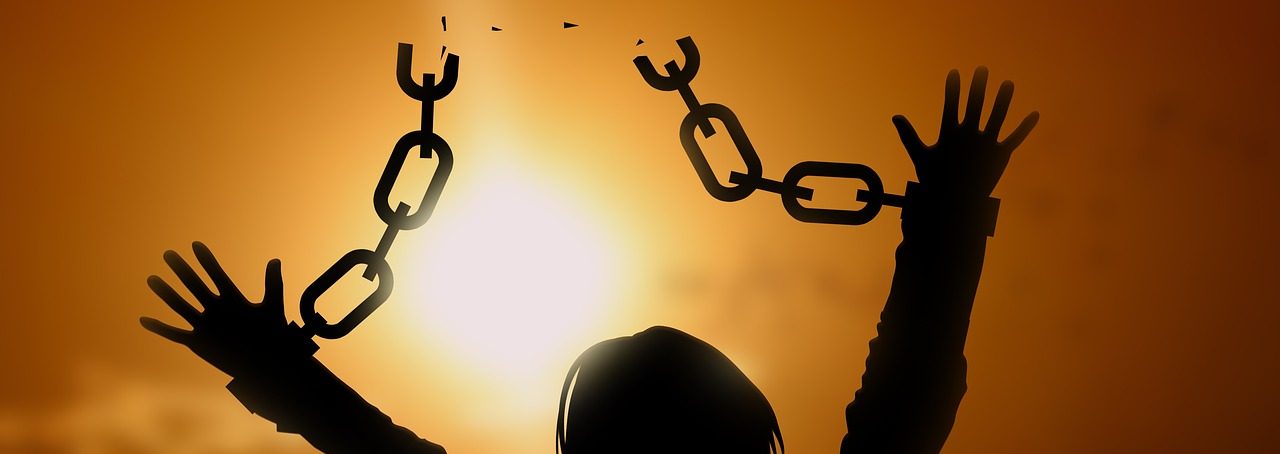In my last article, I spoke of seven ways in which the ancient institution of slavery differed from the Trans-Atlantic Slave Trade (TST). It seemed to me that one ought to know these critical distinctions for meaningful discussions about what the Bible says about slavery to exist.
In this article, I intend to survey the practice of slavery in the African setting. I seek to show that trading in slaves existed in Africa, both by and against Africans, long before the first European missionary stepped on the African continent.
Age-Old Slavery in Africa
One can hardly speak about the slave trade in Africa without mentioning the crucial role Arabs and Arab Muslims played. The Encyclopedia of African History and Culture notes that Arabs traded in African slaves as early as the first century B.C. Having crossed the Red Sea, Arabs established trade points in the horn of Africa including Ethiopia, Somalia, and Sudan. Meroe and Aksum were slave trading centres.
The Red Sea also provided a route for Egyptians, Romans, Arabs, Berbers, and Turks to transport enslaved Africans from Nubia and the Nile Valley.
Willie F. Page and R. Hunt Davis, Jr., Encyclopedia of African History and Culture, 208
Meanwhile, caravan routes existed for over 1000 years from ancient Ghana and Mali across the Sahara Desert to North Africa. Page and Hunt note how ‘at the height of Ghana’s power, which lasted for more than 700 years, these caravan routes were the lifeblood of the empire, carrying salt (and) slaves.’ Indeed, Ghana’s rise to prominence as a kingdom founded by the Soninke peoples cannot be explained apart from the kingdom’s slave trade. The Soninke people built their success by enslaving their African kin across the Sahara.
Other than Ghana, the past, powerful, prosperous, and pervasive African city of Carthage (modern Tunis, Tunisia) was founded by the Phoenicians in the 9th-century B.C. on slave trade, among other goods.
Many miles north of Uganda, some of the great Egyptian pyramids were products of slave labour. Those who read the Bible book of Exodus know, indeed, that Egypt enslaved Israelites and forced them to build, among other things, the ‘store cities, Pithom and Raamses’ (Ex. 1:11).
In North Africa, by 46 B.C., the African kingdom of Numidia (Algeria, part of Tunisia and Libya) traded in slaves with the Roman empire. Page and Hunt state that by the 2nd-century B.C., ‘slavery had been legalized and was practised in some North African cultures.’ The legalization of slavery in some African cultures followed the growth of agricultural practices.
Among the Yorubas of Nigeria, there is a well-known ancient legend where Ifa, the god of divination, sought to own a slave as soon as he entered the world. Indeed, by the 17th-century, the Nembe kingdom of Nigeria had a slave-trading port well-known to Europeans.
Slavery existed in Gabu, a crucial point for the Mali empire. In fact, behind Mansa Musa’s throne stood about 30 slaves (some Turkish and Egyptians). His wife, Inari Kanuté, owned hundreds of slaves.
Historians note too that before Islamic missionaries, Arabs and Persians had established a slave-trading town called Zeila, near Djibouti.
At the beginning of the Islamic period, Arabs traded with the inland African kingdoms ‘north of Lake Chad and the Senegal and Niger rivers, close to the southern edge of the Sahara’ (Page and Hunt, 217). In exchange for slaves, these African kingdoms received salt and luxury goods.
Such is not different from the slave trade in Uganda. Before Christian missionaries (chief among whom was the Scot Alexander Mackay), Buganda’s Kabakas Suna and Mutesa traded in slaves with Arab Muslims, in exchange for beads and luxuries.
The Arabs from the coast, carrying on their business of the slave trade, had established contact with the native kingdoms in the region north of Lake Victoria sometime before Speke, the first European to enter this region, visited the Kabaka of Buganda in 1862.
East Africa Royal Commission 1953-55 Report
European Christian Slaves, African Muslim Masters
But Africans were not the only victims of the slave trade on the continent. We already noted how Egyptian Pharaohs enslaved Jews. We also saw that Mansa Musa owned slaves of Turkish descent. As well, the kingdoms of Ghana, Mali, and Nembe thrived on slavery.
Yet, between A.D 1500 and 1800, a significant number of European Christians became slaves in Muslim North Africa, especially in modern-day Algeria and Tunisia. Robert C. Davis does well to chronicle their numbers in his book Christian Slaves, African Muslim Masters, though such history remains largely unknown in modern conversations. Numbers-wise, Algiers alone enslaved about 1.5 million Italians, Greeks, and Brits. Tunis and Tripoli enslaved over 140,000. Almost all were European Christians.
The above slave trade developed concurrently with the TST, and, according to Davis, for the same reasons. It thus follows that it is not the non-Africans alone who knew how to enslave others, Africans or otherwise.
Indeed, before the TST, David C. Conrad reports that:
In 738, a governor of the Maghrib sent a trading expedition to the “the land of the blacks”—Sudan. The expedition returned successfully, bringing slaves and gold. The trade seems to have originated not with the Arabs, but with the Berber peoples of the desert.
Great Empires of the Past: Empires of Medieval West Africa; Ghana, mali, and sonGhay
As I mentioned before, the slave trade institution goes way before the 16th-century. We can see also from the above, in history, that almost every ethnicity has both enslaved and been enslaved. Such a reality, plus the various ways pre-TST slavery differed from the modern one, must nuance our discussions concerning this practice.
But also, a suggestion that the slave trade in Africa has its origin or encouragement from Christianity is unfounded and lacks historical credence. Humanity, Africans included, have mistreated one another since time immemorial, in different ways and contexts. This fact means that history is more complex than we may imagine, and one cannot fitly divide all humanity into ‘oppressor’ and ‘oppressed’ categories.
In addition, we cannot find reconciliation in fault-finding. Blame-shifting that began with Adam and Eve never reconciles humanity. Sin is so sophisticated that it runs deep through every heart, yours and mine. Thus, a narrative that ignores one’s role in the world’s mess divides more than it heals. We are in this together, both as victims and perpetrators.
It seems to me then, that the above reality, bleak as it is, means that mankind’s solution is not within itself. God, who clothed Adam and Eve, must Himself clothe us with a new humanity. He alone, who knows all things, must heal our wounds and bridge the divide between us. Such is more so since our fundamental problem is more spiritual than social. For, when we turned away from absolute unity—the Triune God—, we ruptured the ligaments that held us together. As such, God must jump the grand canyon and carry us over back to the utopia we seek. He must extend mercy and love without miscarrying justice, for humanity itself cannot keep justice and forgiveness in balance—and yet, we each need a lot of both.
Only at the cross of Christ does righteousness and mercy meet, historically and theologically. Only there does God extend judgment against sin and forgiveness to the sinners we all are. There, in the nail-pierced hands of the God-Man, all divisions find their healing.
For he himself is our peace, who has made us both one and has broken down in his flesh the dividing wall of hostility.
Ephesians 2:14

